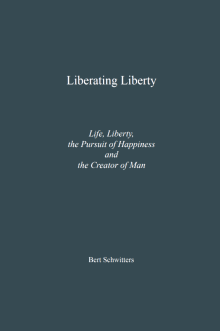In July, the White House published Winning the AI race / AMERICA’s AI ACTION PLAN. According to the Plan’s authors, AI high-priests Michael J. Kratsios (Assistant to the U.S. President for Science and Technology) and David O. Sacks (Special Advisor for AI and the Assistant to the President for National Security Affairs, Marco Rubio, there’s a renaissance afoot, be it that this renaissance depends on “winning the AI race”. There won’t be “a new golden age of human flourishing, economic competitiveness, and national security for the American people”, unless the AI race is won. AI is the digital technology that “will enable Americans to discover new materials, synthesize new chemicals, manufacture new drugs, and develop new methods to harness energy—an industrial revolution. It will enable radically new forms of education, media, and communication—an information revolution. And it will enable altogether new intellectual achievements: unraveling ancient scrolls once thought unreadable, making breakthroughs in scientific and mathematical theory, and creating new kinds of digital and physical art—a renaissance.”
A RENAISSANCE ….. ???
In 1486, the Italian philosopher Pico della Mirandola published “On the Dignity of Man.” This book is considered to be the “Manifesto” of The Renaissance. Although The Renaissance was “humanist” in nature in that it emphasized and celebrated “Man’s greatness”, the Renaissance’s humanists of the 14th-15th-16th centuries were Christians, who sought to renew Christianity by exploring the works of the philosophers of Greek antiquity. In his Introduction to “On the Dignity of Man”, philosopher Paul J.W. Miller writes that della Mirandola held that “Man is the metaphysical center of the universe, standing between the physical world of nature and the spiritual world of angels and God. … [T]he root of Man’s excellence and dignity lies in the fact that Man is the maker of his own nature. Man may be what he wishes to be: he makes himself what he chooses. … This does not mean that Man is an absolute creator of himself, for the making activity of man operates upon potencies which are already given. … The context of Pico’s affirmation of man’s freedom shows that he is thinking above all of moral freedom, the ability to give oneself the character or set of moral habits that one chooses.” According to della Mirandola, “the end of Man is to return to his first cause, God, where our knowledge is perfected.” His philosophy “expresses the fundamentally religious spirit of the Renaissance”. (i)
AI SCIENCE
The AI triumvirate Kratsios, Sacks and Rubio promises “an industrial revolution, an information revolution, and a renaissance—all at once. This is the potential that AI presents”. The problem is that these American visionaries don’t spend one single word on “a renaissance” in their AI Action Plan. They leave it to the reader to guess or use AI to discover how AI is going to “enable altogether new intellectual achievements by unraveling ancient scrolls, making breakthroughs in scientific and mathematical theory, and creating new kinds of digital and physical art.” Admittedly, they do show an interest in “science”, but only in “AI-Enabled Science”. This is because “AI systems can already generate models of protein structures, novel materials, and much else. Increasingly powerful general-purpose [computer language] models show promise in formulating hypotheses and designing experiments. These nascent capabilities promise to accelerate scientific advancement.”
Of Allies, Partners and Adversaries
The visionaries’ problem … ? America is fighting an AI War. “Other countries, including our adversaries, have raced ahead of us in amassing vast troves of scientific data.” The solution … ? “Prioritize investment in theoretical, computational, and experimental research to preserve America’s leadership in discovering new and transformative paradigms that advance the capabilities of AI, […].” Other than improving AI’s capabilities, America’s AI Action Plan is mainly focused on: “Accelerating AI Adoption in Government” to “deliver the highly responsive government the American people expect and deserve”; “aggressively adopting AI within its Armed Forces if it is to maintain its global military preeminence …”; “[e]xporting Big Tech’s American AI to Allies and Partners” because “a failure to meet this demand would be an unforced error, causing these countries to turn to our rivals” and because “the distribution and diffusion of American technology will stop our strategic rivals from making our allies dependent on foreign adversary technology.”
Intelligentia
According to Paul Miller, “[t]he Italian Renaissance witnessed a renewal in interest in man and his intellectual activities.” (emphasis added) This perfectly fits the fact that “intelligence” is commonly understood as the “highest faculty of the human mind” and as Man‘s “inherent, natural, capacity for comprehending general truths”. Intelligence is Man‘s “faculty of understanding, comprehension”. It is the ability to perceive, retain, distinguish, and align data in order to reach conclusions to solve problems. Intelligence is from Latin intelligentia or intellegentia: “understanding, knowledge, power of discerning; art, skill, taste”. Intelligentia is derived from intellegens which is the gerund form of the Latin verb intellego (to understand), meaning that it expresses the doingness of using the mind to understand and grasp meaning. Intellego is a combination of the words inter (“between”) + legō (“to select”, “collect,” “pick”, “bring together”, “align”. Lego also means “to read”, not just in the sense of examining and grasping the meaning of written or printed characters, words, or sentences, but also in the broader sense of discerning or anticipating through examination or observation. This is how lego means reading the lines as well as reading “between the lines”.
AI & Big Government
Reading America’s AI Action Plan, it’s glaringly obvious that it has nothing to do with a renewal of Man’s intellectual activities. What the Plan comes down to is merging AI systems with Big Government and America’s imperial quest for strengthening its efforts to maintain and solidify what is left of its geopolitical power. In this regard, it’s not a “renaissance” of America’s domestic and foreign policies, but nothing other than old, stale, wine in new AI-designed wineskins. Still, with regard to improving Americans’ intellectual capacities, the Action Plan does spend a few lines on the use of AI in learning and education: “The Trump Administration has already taken significant steps to lead on this front, including the April 2025 Executive Order […] ‘Advancing Artificial Intelligence Education for American Youth’.” However, this push for AI Education is not aimed at boosting America’s youth’s intellectual capacities. It forms part of the Administration’s “worker-first AI agenda” and rests on the assumption that “AI can help America build an economy that delivers more pathways to economic opportunity for American workers.” In addition to this, “it will also transform how work gets done across all industries and occupations, demanding a serious workforce response to help workers navigate that transition.”
From Kindergarten to 12th Grade
To effectively transform America’s workforce into an AI-driven workforce, AI Education must begin while the future workforce is still in its infant stage. In Section 1 of said AI Education EO, we read that “[e]arly learning and exposure to AI concepts not only demystifies this powerful technology but also sparks curiosity and creativity, preparing students to become active and responsible participants in the workforce of the future and nurturing the next generation of American AI innovators to propel our Nation to new heights of scientific and economic achievement.” Still, “while AI education in kindergarten through twelfth grade (K-12) is critical, our Nation must also make resources available for lifelong learners to develop new skills for a changing workforce.” This is how the US Government intends to “ensure that every American has the opportunity to learn about AI from the earliest stages of their educational journey through postsecondary education, fostering a culture of innovation and critical thinking that will solidify our Nation’s leadership in the AI-driven future.” Public-private partnerships with leading AI industry organizations, academic institutions, nonprofit entities, and other organizations with expertise in AI and computer science education must be set up “to collaboratively develop online resources focused on teaching K-12 students foundational AI literacy and critical thinking skills”.
Use of AI causes “cognitive atrophy”
There is just one tiny little problem that stands in the way of boosting a “culture of innovation and critical thinking”. That problem’s name is: AI. Artificial Intelligence doesn’t boost critical thinking but impairs it. That’s the outcome of scientific research that took place at one of America’s most prestigious academic institutions: the Massachusetts Institute of Technology (MIT). A couple of weeks before the Trump Adminstration unleashed its AI Action Plan, a group of scientists working at MIT published “Your Brain on ChatGPT: Accumulation of Cognitive Debt when Using an AI Assistant for Essay Writing Task“. (ii) In their publication, the researchers note that the reason they undertook their study stemmed from the fact that “emerging research raises critical concerns about the cognitive implications of extensive LLM [Large Learning Models such as ChatGPT] usage. Studies indicate that while these systems reduce immediate cognitive load, they may simultaneously diminish critical thinking capabilities and lead to decreased engagement in deep analytical processes. This phenomenon is particularly concerning in educational contexts, where the development of robust cognitive skills is paramount. The integration of LLMs into learning environments presents a complex duality: while they enhance accessibility and personalization of education, they may inadvertently contribute to cognitive atrophy through excessive reliance on AI-driven solutions. Prior research points out that there is a strong negative correlation between AI tool usage and critical thinking skills, with younger users exhibiting higher dependence on AI tools and consequently lower cognitive performance scores. […] Unlike conventional search engines that present diverse viewpoints for user evaluation, LLMs provide synthesized, singular responses that may inadvertently discourage lateral thinking and independent judgment. This shift from active information seeking to passive consumption of AI-generated content can have profound implications for how current and future generations process and evaluate information.” (emphases added)
Brains Only versus ChatGPT
In their study, the MIT group explored “the cognitive cost of using an LLM while performing the task of writing an essay”. The researchers chose essay writing “as it is a cognitively complex task that engages multiple mental processes while being used as a common tool in schools and in standardized tests of a student’s skills. Essay writing places significant demands on working memory, requiring simultaneous management of multiple cognitive processes. A person writing an essay must juggle both macro-level tasks (organizing ideas, structuring arguments), and micro-level tasks (word choice, grammar, syntax).” To check the impact of using ChatGPT, the MIT-team split the participants into a “Brain-only” and an LLM group. It found that “[t]he use of LLM had a measurable impact on participants, and while the benefits were initially apparent, […], the LLM group’s participants performed worse than their counterparts in the Brain-only group at all levels: neural, linguistic, scoring.”
Diminished sense of cognitive agency
Compared with the “Use your Brains Only” group, the ChatGPT group scored sigificantly lower in terms of the ability to quote one’s own essay. “[N]ot only was memory encoding shallow, but the semantic content itself may not have been fully internalized.” The ChatGPT group also scored lower in terms of “Essay Ownership and Cognitive Agency”. The responses “suggest a diminished sense of cognitive agency. […] AI tools, while valuable for supporting performance, may unintentionally hinder deep cognitive processing, retention, and authentic engagement with written material. If users rely heavily on AI tools, they may achieve superficial fluency but fail to internalize the knowledge or feel a sense of ownership over it.”
The multi-billion dollar question
In light of the MIT study, the unavoidable question is: When the Assistant to the U.S. President for Science and Technology, the Special Advisor for AI and Crypto and the Assistant to the President for National Security Affairs wrote their “Essay” on how to win the AI Race, did they use their brains only or did they follow the recommendations laid down in their AI Action Plan. In other words, to help “accelerate AI Adoption in Government” and “deliver the highly responsive government the American people expect and deserve”, did they use ChatGPT or some other LLM in writing their AI Action Plan? I’d say that, as true believers in and proselytizers of AI, these high-ranking members of the US Government’s workforce should have acted responsibly and ask ChatGPT to help them write America’s AI Action Plan. In this case, I guess that these AI-“Faithful” took great pride in sacrificing a bit of their own cognitive agency, their ability to fully quote their own “Essay” and a good part of their ownership of the text when they resorted to ChatGPT to do “their” thinking and writing. Or …. could it be that the more likely answer to the multi-billion dollar question is that the authors of the AI Action Plan did use their brains and nothing else to compose it. In that case, an even bigger question is: why must Americans be stopped from doing what the AI Planners did when they put their Plan down in writing … ?
+ + + + + + + + +
[i] On the Dignity of Man; Pico della Mirandola; Introduction by Paul J.W. Miller; Hackett Publishing Company, Inc., Indianapolis/Cambridhe; Reprinted 1998.
[ii] Your Brain on ChatGPT: Accumulation of Cognitive Debt when Using an AI Assistant for Essay Writing Task; Nataliya Kosmyna et al; June 10, 2025; MIT Media Lab, Cambridge, MA. https://arxiv.org/pdf/2506.08872








